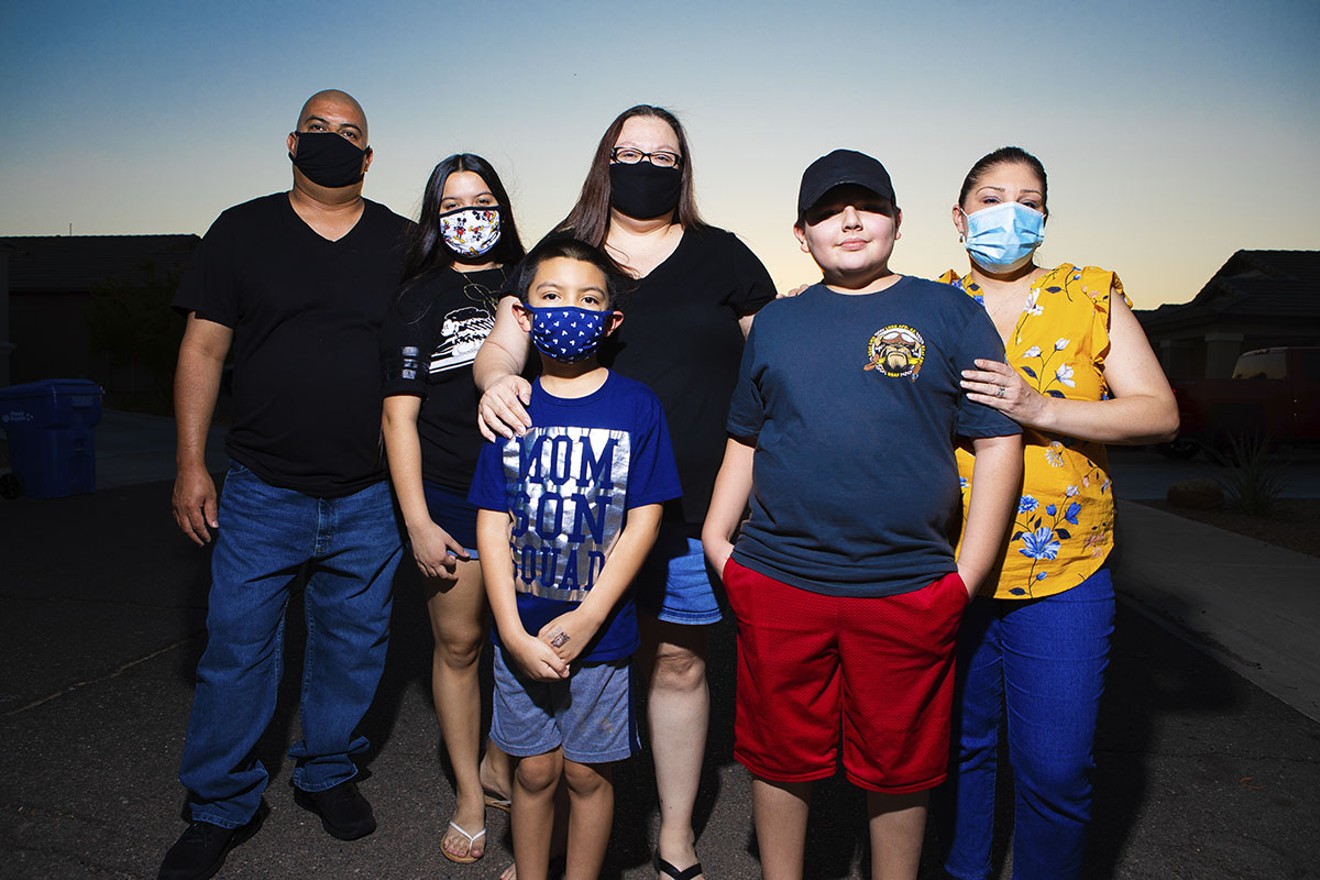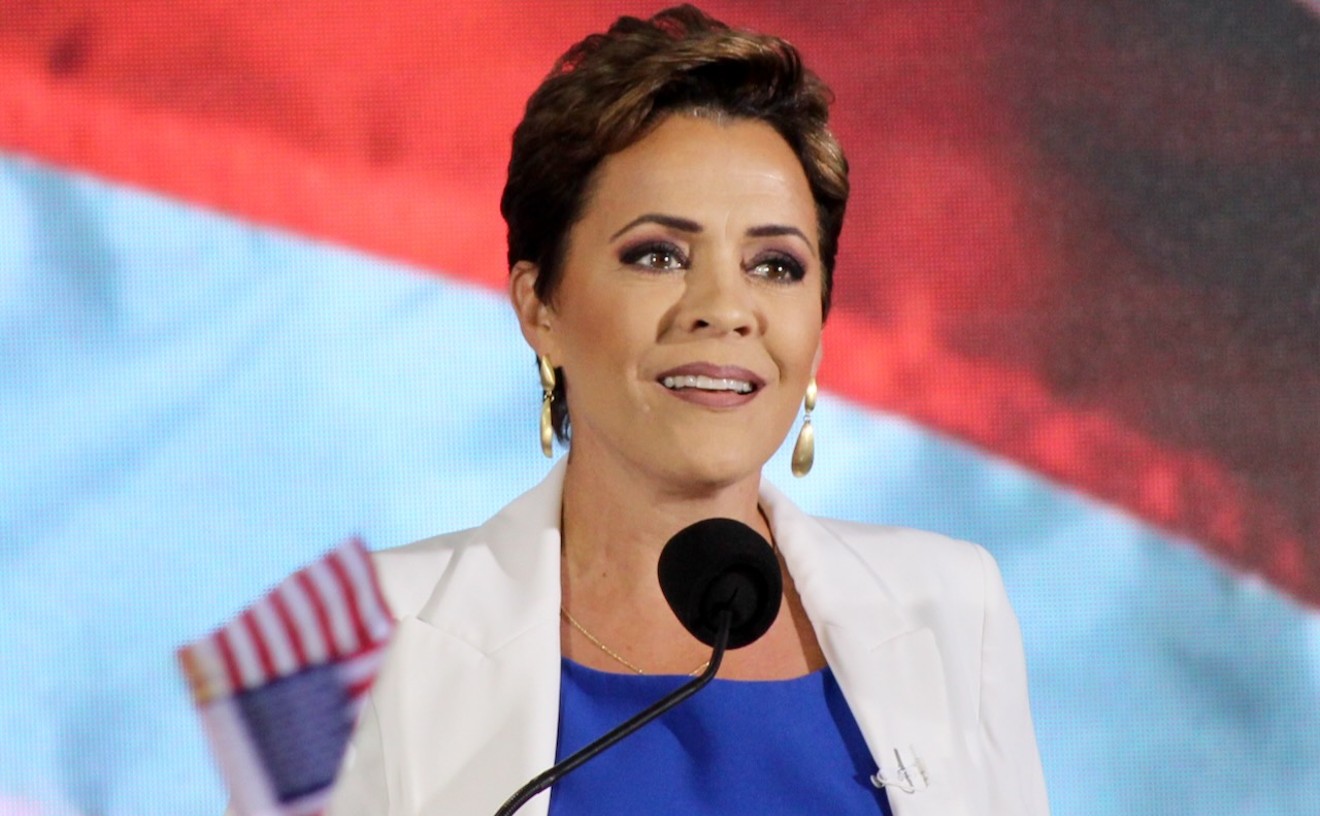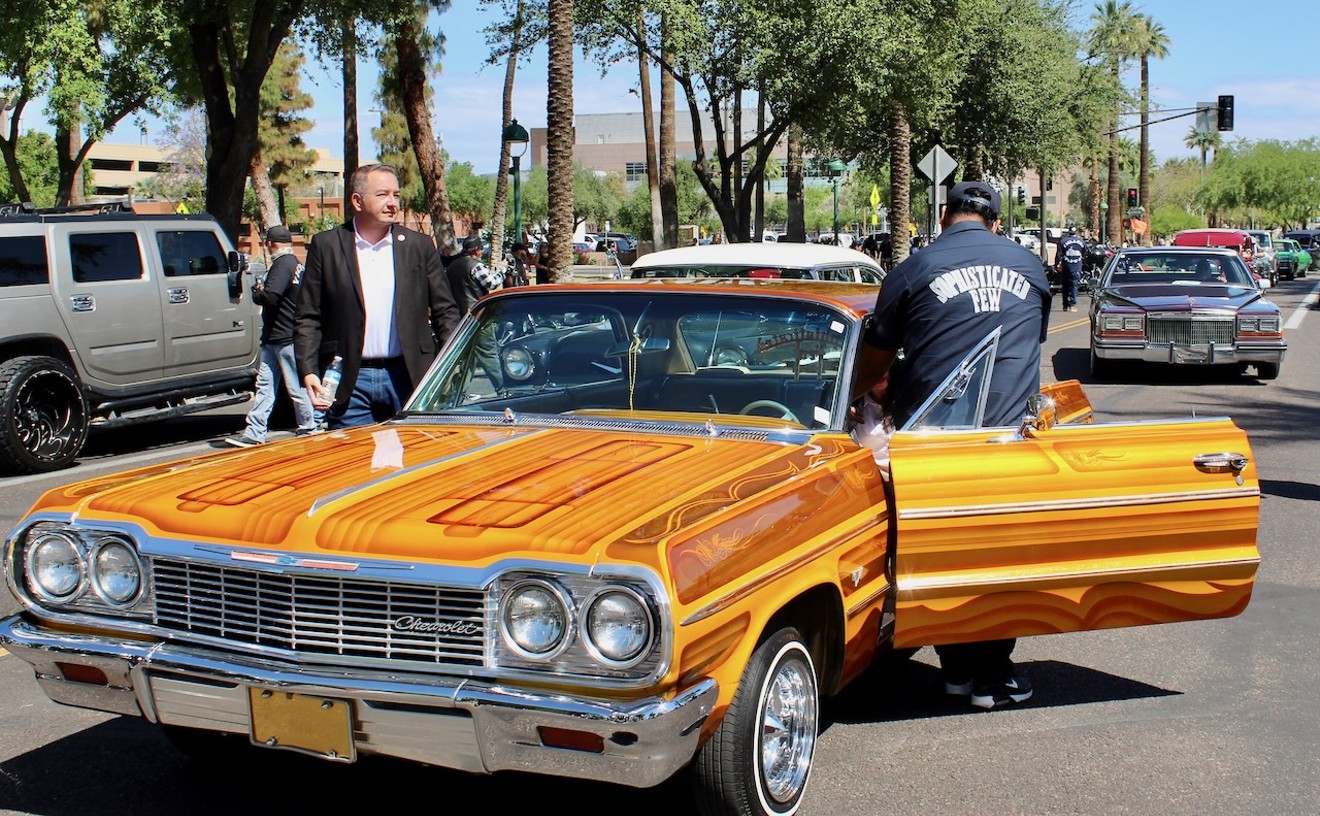Next was Irene Ruiz, his mother. COVID-19 took her a month later on August 20. She was 66.
Six days later, her partner of over 40 years, Gilberto Beltran succumbed to a bacterial infection caused by the disease. He was 75.
Their other son, Pablo Beltran never got to say goodbye. He was hospitalized the same day as his mother. Fifty days later, he passed on September 10. He was 42.
“From July 21 to September 10 anytime our phone rang, it was like our heart would stop because you never knew what they were going to report from the other family members,” said Teresa Rodriguez, Pablo Beltran’s widow.
Those who died leave behind a family in shock. Pablo Beltran had two kids by birth and marriage. Gil Beltran was a beloved uncle. Irene Ruiz and Gilberto Beltran were at the core of a large, interconnected family and leave behind two daughters, a stepson and a clutch of grandkids.
As the COVID-19 spike over the summer subsides, some Arizonans are letting down their guard. They’re gathering in groups, going to bars, holding parties. It was all a big inconvenience for them; now they can go back to normal. There was never really a threat, some say.
For those who have lost loved ones or are struggling with the long-term impact of the disease, it's a different story. There are deep scars. That’s especially true among Latino people like the Beltrans. Around half of all COVID-19 cases Maricopa County has ethnicity data for are Hispanic or Latino people.
Experts have cited a “COVID fatigue” as leading people to lower their guard, but for those who’ve experienced the disease's devastation firsthand, it still feels real. They’re still wearing masks, postponing gatherings, and taking precautions.
People on Facebook have accused the Beltran family of fear-mongering about the virus, said Irene Beltran, the youngest sister. Their concerns are not exaggerated, she said.
“We’re living in fear because of what we experienced,” she said.
Three months, four dead
It all started with a small gathering. Like many Arizonans this summer — including the governor — the Beltrans decided it would be all right to have a small, family get-together.
On the Saturday of Fourth of July weekend, they gathered in a backyard to celebrate Teresa Rodriguez’s birthday. It was mostly outdoors and nobody had any symptoms.
“It was pretty small, but we all, you know, we all got it,” Rodriguez said.
The disease ripped through the family, infecting even the kids. Pablo Beltran’s 14-year-old son tested positive without symptoms. The men seemed to be hit the hardest.
Jessica Beltran, the older of the two sisters, hadn’t attended because her family was quarantining after she developed COVID-19 symptoms a few days earlier.
“I started to get better after about a week [after the gathering], and they all started to get worse,” she said.
Gil Beltran was the first to get sick, developing a fever and chills a few days after the gathering.
“But he started to lose his oxygen real quick,” Jessica Beltran said.
They couldn’t get his oxygen levels above 85 percent and he was admitted to the hospital on Saturday, July 18.
Irene Beltran said they first noticed their mother had a problem when she said something her daughter had cooked tasted bad. She had lost her sense of taste. It got worse from there.
“She thought it was like a flu, like a really bad flu. But then both my mom and my two brothers suffered from the clots,” Jessica Beltran said.
Gil Beltran died on July 21. Two days later, his brother and mother were admitted to the hospital — Pablo Beltran in the morning and Irene Ruiz later in the day.
“We had one day to process my brother-in-law’s death before they both went into the hospital,” said Rodriguez.
In the meantime, Gilberto Beltran was staying with his daughter, Jessica Beltran, on oxygen and slowly recovering. When his wife died on August 20, he started to get worse.
“He was just doing a little less, but his oxygen was still good. But he just seemed sadder,” Jessica Beltran said.
While he was fighting off the COVID-19 successfully, it had an impact on his immune system. A rare bacteria, dormant in his system, took advantage. He died from sepsis, six days after his wife.
Through all this, Pablo Beltran was hanging on in the hospital. Four days after arriving, he had been put on an ECMO machine, a rare advanced measure that acted as an artificial heart and lungs.
For over 40 days the machine pumped blood and oxygen through his body. Doctors at St. Joseph’s Hospital and Medical Center considered heart or lung transplants, but in the end his family had to make the decision to let him go.

Pablo Beltran and Teresa Rodriguez on a trip to Disneyland with their two kids.
Courtesy of Teresa Rodriguez
“We didn’t say goodbye. We didn’t want them to know what was happening. So we just talked to them. Just prayed over them,” Jessica Beltran said.
An unequal killer
Nationwide, Latino and Hispanic people have died at over 1.5 times the rate of white people, according to data compiled by The Atlantic’s The COVID Tracking Project. Black people have died at 2.4 times the rate of white people, according to the same data.Preliminary Harvard research released in June found that COVID-19 mortality rates are disproportionate by race, and particularly so among people aged 25 to 54 who normally aren't considered as vulnerable to the virus.
Natalia Linos is executive director of Harvard's François-Xavier Bagnoud Center for Health and Human Rights, which produced the paper. She told Phoenix New Times that this trend could be a sign COVID-19 is more widespread overall among those racial demographics, as deaths in that age group were less likely to be associated with nursing homes, where outbreaks had been concentrated at that point.
Experts point to the disproportionate representation of Latino people in jobs that are considered essential, require direct contact with others, or lack health benefits. Gil Beltran, the first infection in the family from the party, drove a rental car shuttle at the airport for 21 years.
Many of the other drivers came down sick and five other of them were hospitalized, Jessica Beltran said.
“I only know of two who made it out of the hospital,” she said.
Jessica Beltran also believes she was infected while working at the airport. For 13 years she’s worked for the TSA, searching checked bags underground. Many of her coworkers have also been sickened, but finding employment elsewhere isn’t on the table.
“It’s hard right now,” she said. “I think it’d be hard to find a job that would pay as much.”
State Representative César Chávez’s district was hit particularly hard by the virus.
"It really comes down to one thing — that individuals who live in the Maryvale community can't afford to stay home," he told New Times earlier this summer.
In combination with multigenerational families living together, this can have serious consequences.
This was what impacted Rosie Martinez’s family. A churchgoing great-grandmother who would always give money to people experiencing homelessness while driving around, she died on August 8 after COVID-19 ravaged her family, striking seemingly at random. Her family believes she may have been infected by a son who lives with her, and who had three people test positive at his work.
“It’s left a scar. It has left a scar in this family,” said her son-in-law. “ Are we going to return to what we were before? No, because Rosie's not here.”

Rosie Martinez's son-in-law, daughter, granddaughter and husband pose with her photo, Sept. 22. In front of them lay years of memories.
Erasmus Baxter
A happy family
Gilberto Beltran and Irene Ruiz grew up in the northern Sonora border town of Agua Prieta. Ruiz was the best friend of Beltran’s younger sister, but it wasn’t until years later when Beltran had left the town to live in Los Angeles that they reconnected.The two moved to Phoenix in 1978 and had four kids. Gil, named after his father’s twin who died as a baby, was followed by Pablo, Jessica, and Irene.
Before they retired, Gilberto Beltran worked security at a car dealership and Irene Ruiz helped teach students with disabilities at the Roosevelt School District.
Their family was extensive and loving and included scores of friends that grew with each generation.
Gilberto Beltran would make friends everywhere he went, even on just a trip to AutoZone, and had a knack for finding connections with the people he met.

The entire family came together for Pablo Beltran and Teresa Rodriguez's wedding two years ago. Pablo coordinated all the details. "He was the bridezilla," his sister jokes.
Courtesy of Teresa Rodriguez
Teresa Rodriguez related that after she and Pablo Beltran met 16 years ago, he quickly assumed the role of father to a child she'd had previously. They had another child together, and in 2018 decided to get married.
Each year the entire extended family would go on a trip to Disneyland around Christmas. On the last day there, they would pick out their presents for each other and open them on Christmas.
“I came into the family not really realizing how much Disneyland mattered to them,” Rodriguez recalled. “So I went the first time and I was like, 'I don't understand. They're crazy. This was Disneyland.'
"But I didn't understand that when I went with my brother-in-law Gil, it was a whole different experience. You not only enjoyed rides, you enjoyed the food, you enjoyed all the characters, you enjoyed parades, the smells, the sights, the sounds.”
While everyone loved Disney, Gil Beltran particularly loved Star Wars, something he shared with his young nephew, Elicio Gomez. They had the same books and everything.
“Yeah, he was a great uncle,” Gomez said shortly before breaking down into tears. He brought out a sketchbook filled with drawings and flipped to one done in pencil. It’s all the family members gathered by a house. He points them each out by name. Above the house, he’s written the words “family forever.”
Socially constructed
The factors causing disparate rates of infection aren’t a fact of nature — they’re a result of history, how we’ve organized our society, and systemic racism."There is nothing cultural about being in the low-wage sector," argues Dolores Acevedo Garcia, a Brandeis University professor who has studied the health impacts of residential segregation for over two decades. "There is nothing cultural about not having health insurance."
Two doctors manning the Arizona Latin-American Medical Association's COVID-19 hotline (480-788-9692, or in Spanish at 602-888-4073) told New Times that they often heard from people concerned about how accessing testing or care would affect their immigration status, who didn't know how to isolate in cramped living conditions, or who were grappling with misinformation from social media.
Dr. Pedro Rodriguez, the organization's vice chairman, said he would field as many as 20 calls in a 24-hour shift. Even if people have a green card, they may be afraid of falling on the wrong side of policies that penalize non-citizens for accessing public benefits, he said.
"The biggest thing is they feel a sense of distrust in anything that has to do with the state or the city," Rodriguez said, adding that the rhetoric around immigration has spread fear and misinformation.

The loss of his uncle has been tough on Elicio Gomez (right). Behind him are his father, Francisco Gomez, his sister, Manai Gomez, and his mother, Jessica Beltran.
Jim Louvau
Other systemic factors make communities more exposed. Incarceration, reliance on public transit, and the limited access to economic assistance for people with undocumented family members play out on top of environmental factors like poor air quality or lack of access to healthy food.
"Essentially, what we're doing is concentrating a lot of risk factors" in marginalized communities, said Acevedo Garcia. Amplifying the issue is the divided nature of our society. Because people are more likely to live near or interact with other people of the same race, the virus is more likely to spread within ethnic groups that are already at a higher risk of infection.
White people who live in wealthier communities have had a disproportionately easier pandemic than others. It wasn’t until mid-June that Governor Doug Ducey acknowledged to reporters that he now knew people who had contracted COVID-19. At that press conference, he signaled an increased seriousness about the outbreak that would go on to claim thousands of lives over the summer and finally allowed local jurisdictions to impose mask requirements.
Joseph Garcia, director of public policy and executive director of the political action fund at Chicanos Por La Causa, said that for non-Latino people, immigration is too often seen as a political issue, not a real and personal thing.
"[COVID-19]'s no different," said Garcia, who lost his 33-year-old nephew to the virus.
Looking forward
Teresa Rodriguez’s leg was shaking during a recent interview. She was sitting at the dining room table in Jessica Beltran’s South Phoenix house with her sisters-in-law. Occasionally during the interview, her voice catches and she has to pause. It’s been only 14 days since she had to say goodbye to her partner.Gilberto Beltran’s oxygen tanks are lined up next to the front door. Poster boards covered in photos and inscriptions that had brightened family members' hospital rooms for a short time now lay together on a table.
Losing so many people in short succession has made grieving difficult — you can't process one death before facing another. Even more difficult was not being able to be there for their family members while they were in the hospital, apart from end-of-life visits, or to mourn them properly afterward.
“It's really hard to mourn when you're in this COVID situation because the first thing a Hispanic family wants to do is to gather,” Rodriguez said.
The one bright spot has been the support from the community. A car show and a tamale sale have been held to help raise money for the family. GoFundMe’s for hospital bills and funeral expenses have raised around $21,800 between them.
The family hopes they will be able to hold a ceremony outdoors in January. They’re having a crematory bench built to hold the ashes of everyone they lost.
“They will all be placed together," Rodriguez said. "Mom, Dad and both sons will be placed together."


















